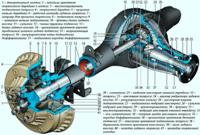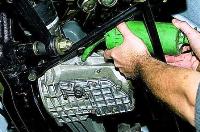The crankcase ventilation system ensures the removal of crankcase gases.
Blow-by gases through the exhaust hose enter the oil separator located on the cylinder block
The hoses of the first and second circuits are two hoses (one small diameter, the other large), through which crankcase gases that have passed the oil separator are fed into the receiver and then into the combustion chamber.
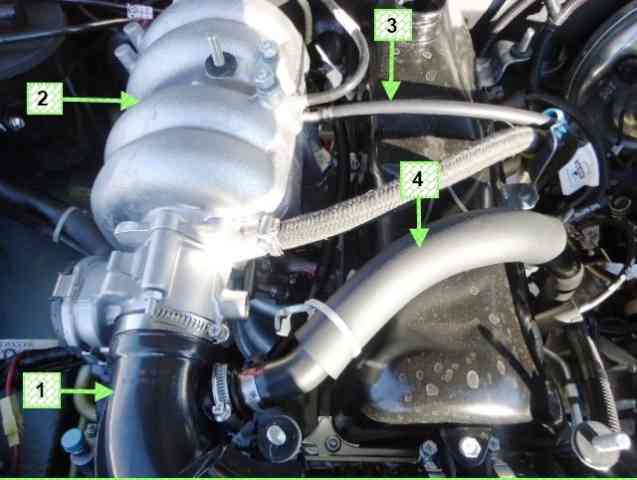
The first circuit has a calibrated hole - a jet with a diameter of 1.7 mm.
The jet is located in the primary circuit hose (small diameter hose) on the side connected to the oil separator fitting.
The primary circuit hose goes from the oil separator to the receiver.
The second circuit hose (larger diameter hose) goes from the oil separator to the intake pipe hose.
In idle mode, all crankcase gases are supplied through the primary jet (small diameter hose).
In this mode, a high vacuum is created in the intake pipe, and crankcase gases are effectively sucked into the throttle space.
The jet limits the amount of exhaust gases so that the engine does not interfere with idling.
In load modes, when the throttle is partially or fully open, a small amount of blow-by gases pass through the primary circuit jet.
In this case, their main volume passes through the second circuit (large diameter hose) into the intake pipe hose in front of the throttle pipe and is then burned in the combustion chamber.
In the absence of a 1.7 mm jet, the ECM erroneously determines an overestimated value of leakage through the throttle valve (the nominal value determined by the manufacturer is 3 - 5 kg / h), which leads to instability of the idle speed
Cleaning the crankcase ventilation system
Over time, resinous deposits from crankcase gases accumulate in the crankcase ventilation system of the engine, making it difficult to remove these gases into the engine cylinders for combustion.
Because of this, the pressure of the gases inside the engine rises, and oil leaks through the seals. To avoid this, periodically clean and flush the system.
Clean the crankcase ventilation system before every oil change.
You will need: a screwdriver, a 13 wrench, kerosene for washing, clean rags, a container for washing parts.
The oil separator mounting nut is difficult to access without a special tubular wrench. If there is no such key, clean the oil separator without removing it from the engine.
If a large amount of kerosene gets into the crankcase when cleaning the oil separator, change the oil in the crankcase.
Remove the tips of high-voltage wires from the spark plugs
Remove the dipstick from the guide tube

Unscrew the fitting of the oil supply pipe to the hydraulic timing chain tensioner from the hole in the cylinder block and unscrew the two bolts securing the tube holders
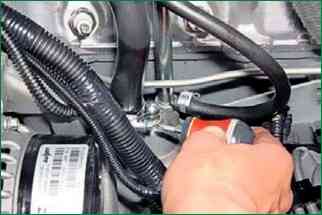
Use a screwdriver to loosen the hose clamp of the main crankcase ventilation circuit
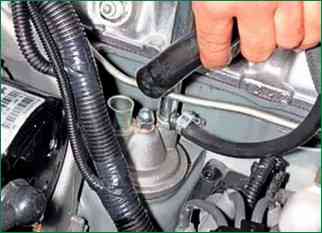
Remove the hose from the nozzle of the oil separator cover
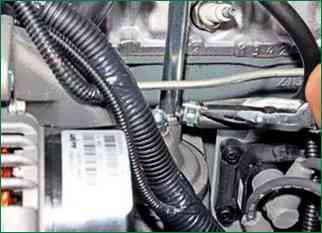
Using pliers, loosen the hose clamp of the crankcase ventilation idle circuit

And remove the hose from the nozzle of the probe guide tube

Unscrew the cap nut securing the oil separator cover with a 13 spanner
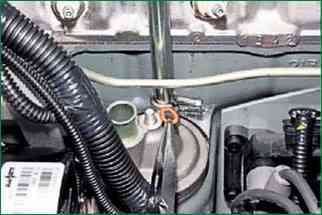
Remove the copper sealing washer
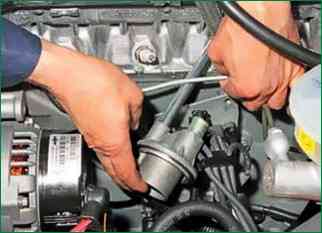
Remove the oil separator cover, removing it between the oil supply pipe to the hydraulic tensioner and the wall of the cylinder block
The connection between the cover and the cylinder block is sealed with a paronite gasket
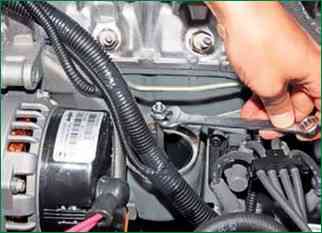
We screw two M8 nuts onto the oil separator stud

We lock the nuts with two keys for 13
Unscrew the stud by the lower nut with a 13 wrench
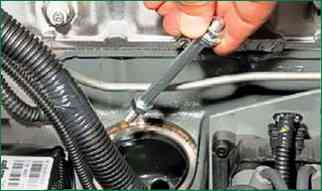
Remove the pin from the oil separator

We grab the edge of the oil separator with pliers

Remove the oil separator from the socket of the cylinder block
We wash the parts of the oil separator with gasoline or kerosene and install in the reverse order.
We also flush the hoses of the ventilation circuits








